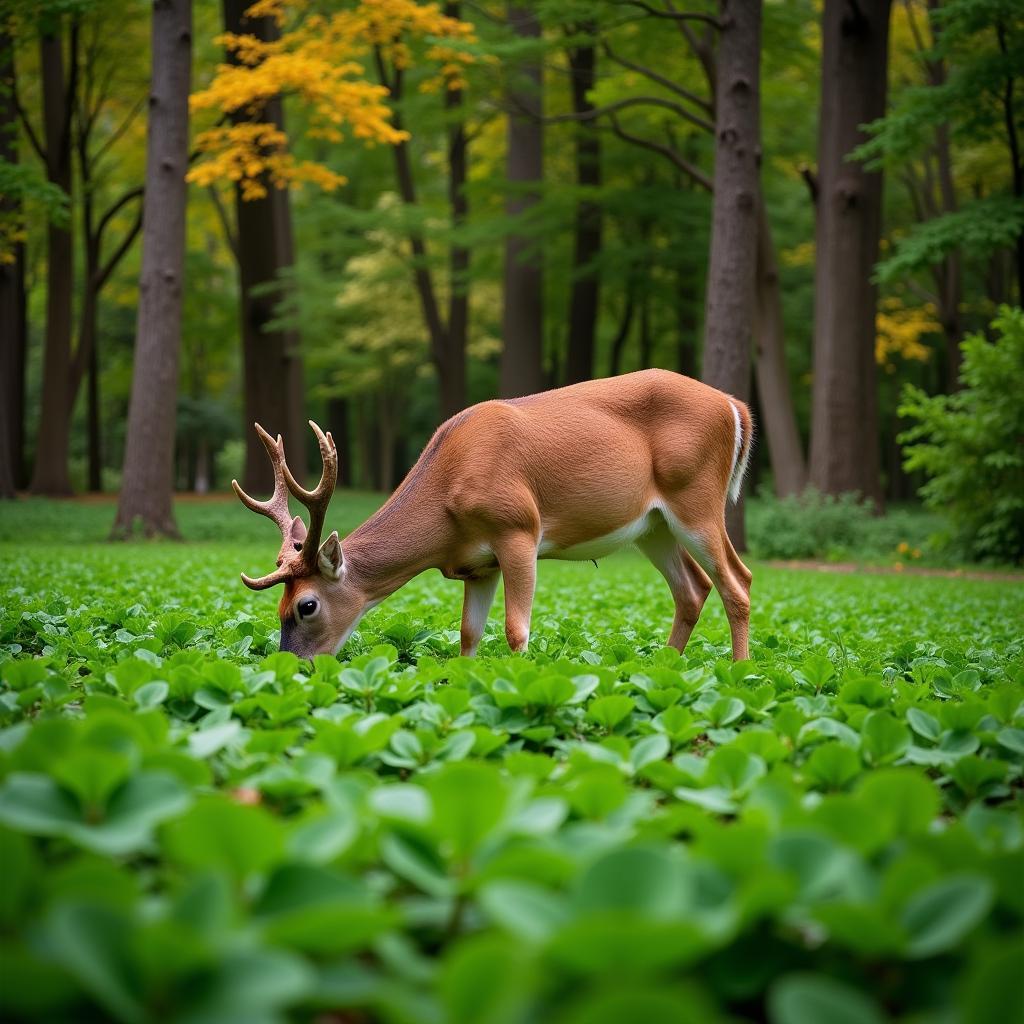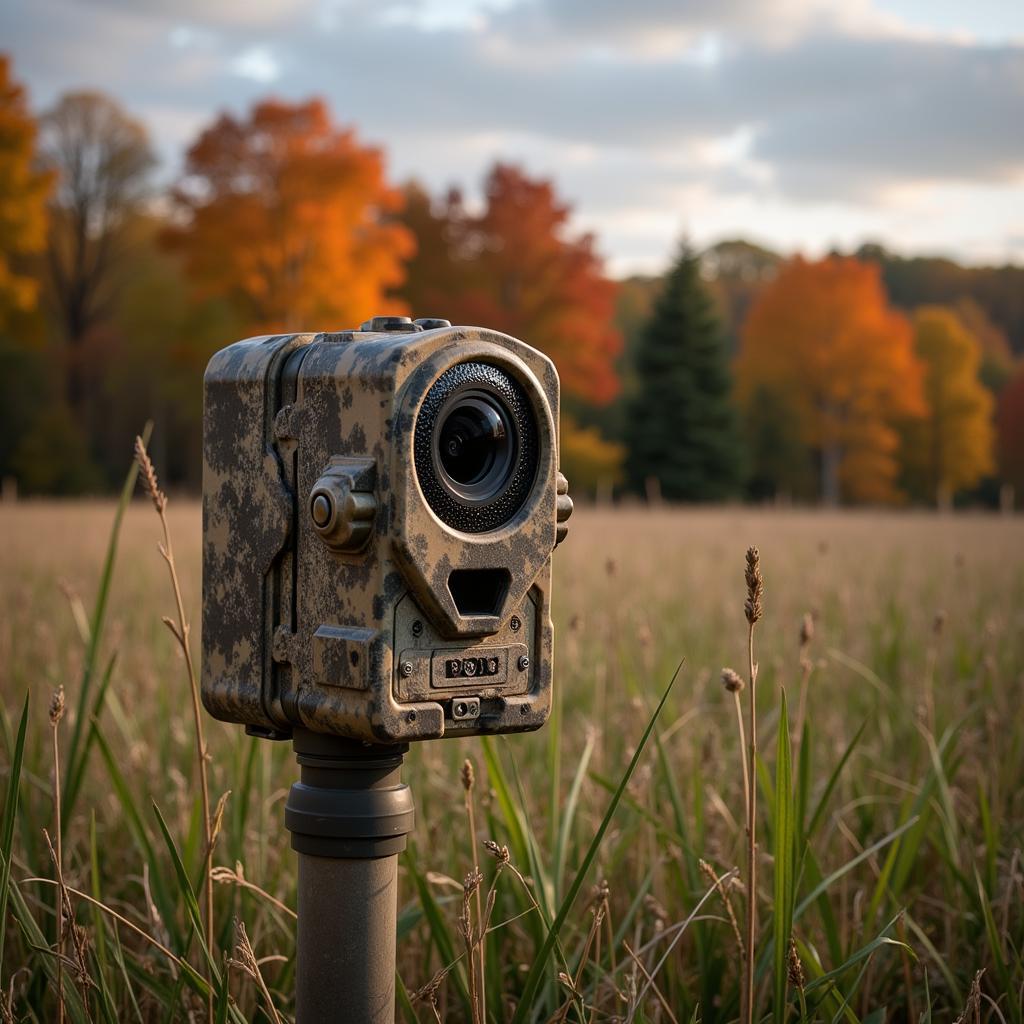Food plots are a key element in successful wildlife management, providing essential nutrients and attracting animals for observation and hunting. Whether you’re a seasoned hunter, a wildlife enthusiast, or simply looking to enhance your property’s biodiversity, understanding and implementing effective Food Plot Ideas is crucial. From selecting the right plants to preparing the land, every step contributes to the overall success of your food plot. This guide will delve into various food plot ideas, offering practical advice and insights to help you create thriving food sources for wildlife.
Choosing the Right Food Plot Idea for Your Needs
Before diving into specific food plot ideas, consider your goals, the local climate, and the types of wildlife you want to attract. Different plants thrive in different conditions, and animals have varying dietary needs. Do you want to attract deer, turkey, or other species? Are you looking for a year-round food source, or something more seasonal? Answering these questions will guide you towards the most suitable food plot idea. For example, if you’re interested in attracting deer in a region with cold winters, a no till clover food plot is a great option.
Matching Food Plots to Wildlife Species
Understanding the dietary preferences of your target species is crucial. Deer, for instance, prefer legumes like clover and alfalfa, while turkeys are drawn to grains like corn and milo. Researching the specific needs of your target species will help you choose the most effective food plot plants. What if you’re thinking about smaller game? Consider incorporating plants that produce berries and seeds. Don’t forget, a thriving ecosystem benefits all wildlife, not just your target species.
What are good food plot options for attracting deer?
Legumes like clover and alfalfa are highly attractive to deer.
Considering Climate and Soil Conditions
Your local climate and soil conditions will also influence your food plot choices. Some plants tolerate drought better than others, while some require specific soil pH levels. Conduct a soil test to determine the nutrient content and pH of your soil and choose plants that are well-suited to your specific environment.
How does climate affect food plot selection?
Climate dictates the types of plants that will thrive. Choose drought-tolerant plants for arid regions.
 Deer Grazing in Clover Food Plot
Deer Grazing in Clover Food Plot
Implementing Your Food Plot Idea: A Step-by-Step Guide
Once you’ve chosen the perfect food plot idea, it’s time to put it into action. Proper land preparation, planting techniques, and ongoing maintenance are essential for success.
Preparing the Land
Clear the area of existing vegetation and debris. Till the soil to loosen it and improve drainage. Amend the soil with fertilizer if necessary, based on the results of your soil test. Consider a buckwheat for food plots as it can help improve soil health.
Why is land preparation important for food plots?
Land preparation ensures optimal conditions for plant growth and nutrient uptake.
Planting and Maintenance
Follow the recommended planting instructions for your chosen seeds or seedlings. Water regularly, especially during dry periods. Control weeds and pests to prevent competition with your food plot plants.
What are essential food plot maintenance tasks?
Regular watering, weed control, and pest management are crucial for a successful food plot.
 Planting Food Plot Seeds
Planting Food Plot Seeds
Maximizing the Impact of Your Food Plot
Strategically placing your food plot can enhance its effectiveness. Consider proximity to water sources, bedding areas, and travel corridors. Creating multiple smaller food plots can distribute resources and attract a wider range of wildlife. You can even consider incorporating edible plants like those featured on our food from fairy tales page, although they might need special care.
Why is food plot placement important?
Strategic placement increases the likelihood of wildlife utilizing the food plot effectively.
Creating a Diverse Food Source
Consider planting a mix of plant species to provide a diverse food source throughout the year. This approach can attract a wider variety of wildlife and ensure a consistent food supply even if one plant species fails. Think about what you might need for your next hunting trip and check out our food for hunting suggestions!
How does plant diversity benefit a food plot?
Plant diversity ensures a consistent food supply and attracts a wider range of wildlife.
Monitoring and Adapting
Regularly monitor your food plot and observe wildlife activity. This will help you understand what’s working and what needs adjustment. Be prepared to adapt your food plot strategies based on observations and changing environmental conditions.
Why is monitoring a food plot important?
Monitoring allows you to adapt your strategies and ensure the long-term success of the food plot.
 Wildlife Camera in Food Plot
Wildlife Camera in Food Plot
Conclusion
Creating successful food plots requires careful planning, execution, and ongoing management. By carefully considering your goals, the local environment, and the needs of your target wildlife, you can develop and implement effective food plot ideas that contribute to a thriving ecosystem. Remember, a well-maintained food plot is more than just a food source; it’s an investment in the health and sustainability of your local wildlife populations. So, start planning your food plot today! If you are looking for other food ideas, especially for a party, check out our fun spider man party food ideas.
FAQ
- What is the best time of year to plant a food plot?
- What are some common mistakes to avoid when creating a food plot?
- How much land is needed for a successful food plot?
- What are some natural food sources to consider alongside a planted food plot?
- How can I protect my food plot from pests and diseases?
- What are the legal considerations for establishing a food plot in my area?
- How can I measure the success of my food plot?
Need help with your food plot ideas? Contact us! Phone: 02437655121, Email: minacones@gmail.com Or visit us at: 3PGH+8R9, ĐT70A, thôn Trung, Bắc Từ Liêm, Hà Nội, Việt Nam. We have a 24/7 customer support team.